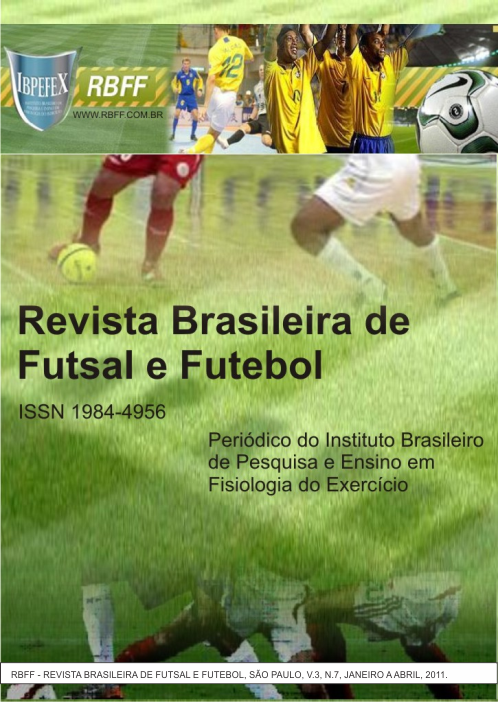The quantitative analysis of the overall performance of the Rezende Futsal Cup category Under 18
Abstract
Held in 2008, the Rezende Futsal Cup Under-18 with the participation of six schools, five private and one state. Were performed in total, adding to the group stage, semifinal contest of 3rd and 4th places and final, ten matches, four of them in court size 26x13 andthe other six matches on court size 30x17. The objective of this study was to quantify the relationship between the size of the court, the amount of goals,faults, cards, and for substitutions in the final outcome of matches. The Futsal, over theyears, due to changing rules and also by the limited space of the court, has becomea sport increasingly dynamic. With the change in size of one court to the other, wecan clearly observe the variance in the final results,and with regard to the amount ofsubstitutions, faults and cards. For the development of this research was used paper,pen and calculator, addition to overviews of the ten matches; data were collected,analyzed and discussed for the development of a complete content. Returned the following results: both average goals, faults and yellow cards were higher on the court of 26x13; the substitutions were in greater number on the court of 30x17. It was concluded that because of the averages goals, faults and yellow cards be larger in the on the court of 26x13 explained by the fact size even smaller than normal makethe game even more dynamic and disputed, already the fact that the number of substitutions, have been higher on the court 30x17 explained by the fact that the bigger the game space the greater the physical demands the athlete.
References
-Bayer, C. O ensino dos desportos coletivos. Lisboa, Dinalivro, 1994.
-Figueiredo V. A seleção brasileira de futsal através dos tempos. Fortaleza. Expressão gráfica. 2004.
-Garganta, J. O treino da tática e da técnica nos jogos desportivos à luz do compromisso cognição -ação. In: Barbanti, V.; Bento, J.; Marques, A.; Amadio, A. Esporte e atividade física: interação entre rendimento e qualidade de vida. São Paulo. Manole. 2002.
-Hernández Moreno, J. Análisis de las estructuras del juego deportivo. 2. ed. Barcelona: Inde Publicaciones, 1998.
-Hudson, V.T. Educação Física -Futebol de Salão. São Paulo. Saraiva. 1979.
-Oliveira, L.M. Perfil de Atividade do Jovem Jogador de Futsal, um Estudo em Atletas Juvenis Masculinos. Dissertação de Mestrado. Faculdade de Ciências do Desporto e Educação Física. Universidade do Porto. 1999.
-Ré, A.H.N.; De Rose Junior, D.; Bohme, M.T.S. Stress e nível competitivo: considerações sobre jovens praticantes de futsal. Revista brasileira de Ciência e Movimento. Vol. 12. Núm. 4. 2004. p. 83-87.
-Santana, W.C. Futebol de salão e futsal: 70 e poucos anos de história. 2004. Disponível em http://www.pedagogiadofutsal.com.br/ Acessado em 25/04/2010. 2004.
Authors who publish in this journal agree to the following terms:
- Authors retain the copyright and grant the journal the right of first publication, with work simultaneously licensed under the Creative Commons Attribution License BY-NC which allows the sharing of the work with acknowledgment of the authorship of the work and initial publication in this journal.
- Authors are authorized to enter into additional contracts separately for non-exclusive distribution of the version of the work published in this journal (eg, publishing in institutional repository or book chapter), with acknowledgment of authorship and initial publication in this journal.
- Authors are allowed and encouraged to post and distribute their work online (eg, in institutional repositories or on their personal page) at any point before or during the editorial process, as this can bring about productive change as well as increase impact and impact. citation of published work (See The Effect of Free Access).





